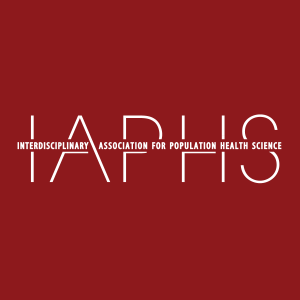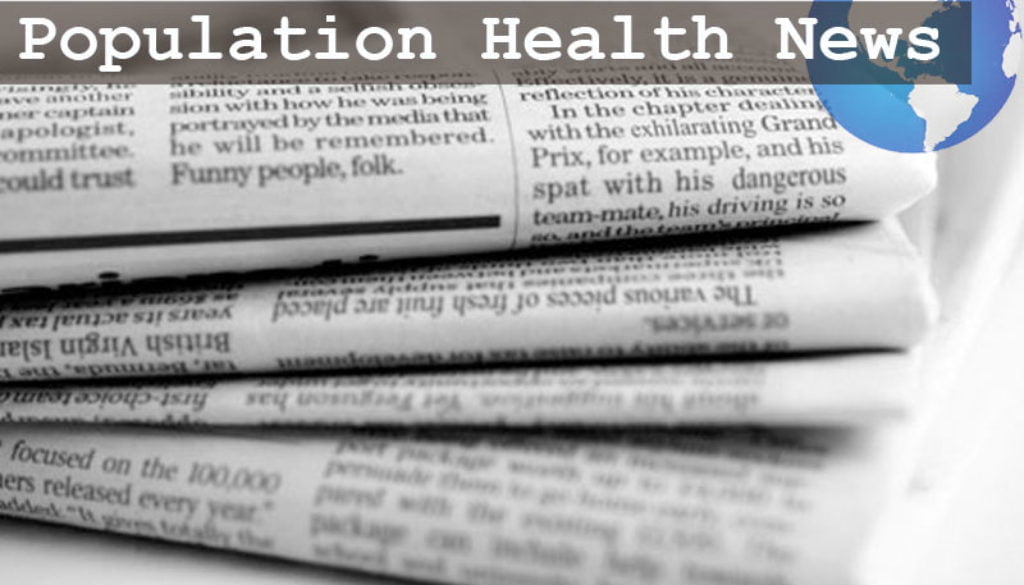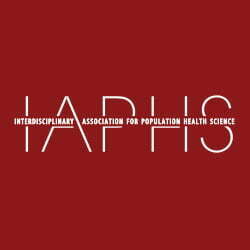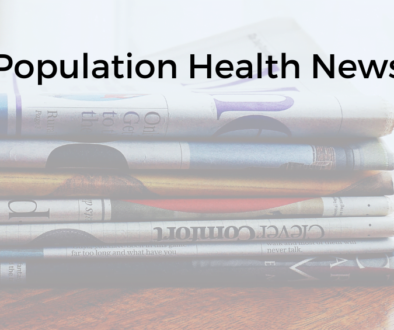Population Health Roundup: May
IAPHS StaffIAPHS Members in the News
 IAPHS Members David Warner and Mark Hayward wrote the chapter “The Demography of Population Health” in The Handbook of Population, newly published from Springer.
IAPHS Members David Warner and Mark Hayward wrote the chapter “The Demography of Population Health” in The Handbook of Population, newly published from Springer.
Disparities
 Homelessness hurts babies: Infants who experienced a period of homelessness had higher rates of low birthweight, “respiratory problems, fever, and other common conditions; longer neonatal intensive care unit stays; more emergency department visits; and higher annual spending.” (Health Affairs, May 2019)
Homelessness hurts babies: Infants who experienced a period of homelessness had higher rates of low birthweight, “respiratory problems, fever, and other common conditions; longer neonatal intensive care unit stays; more emergency department visits; and higher annual spending.” (Health Affairs, May 2019)
SDOHs noted in 60 seconds: A 1-minute, 15-item survey could identify a patient’s social determinants of health in pediatric populations. (JABFM, May 2019)
Aging into homelessness and health problems: More and more seniors are becoming homeless, which ages them more rapidly on the streets, as much as 20 years past their chronological age. (Chico Enterprise-Record, May 12, 2019)
Parental incarceration and health behaviors: Young adults with an incarcerated parent are more likely to engage in unhealthy behaviors and less likely to seek health care. (Pediatrics, September 2018)
Physician bias effect found via veterans’ pensions: Doctors who certified disability during the American Civil War appeared to discriminate against black veterans, creating an income gap and contributing to racial disparities. (NBER Working Paper, May 2019)
Place
 Deaths increased after disaster in Puerto Rico: Excess deaths were found among people 60 or older; causes include heart disease, diabetes, Alzheimer’s, and septicemia. (AJPH April 18, 2019)
Deaths increased after disaster in Puerto Rico: Excess deaths were found among people 60 or older; causes include heart disease, diabetes, Alzheimer’s, and septicemia. (AJPH April 18, 2019)
Mapping methadone: Online map shows where to get opioid addiction treatment drugs. (KUOW Radio, April 26, 2019)
Gun injuries aren’t necessarily close to home: In some neighborhoods, more firearm injuries happen to nonresidents, or to people without addresses. (Harborview Injury Prevention & Reserch Center, May 6, 2019)
Air pollution a significant miscarriage risk: Bad air poses a miscarriage risk “equivalent to that of smoking.” (The Guardian, January 2019, from Fertility and Sterility journal, February 2019)
Do small, rural towns need a hospital? One rural Kansas town is figuring out how to care for its residents, who experience higher rates of physical inactivity, obesity, smoking, and more. (NPR, May 14, 2019)
When the neighborhood is the patient: Cross-sector partnerships to improve housing (and health) in Latinx communities has shown decrease in vacancy rates, improvements in youth emotional health and graduation rates. (Salud America on the Healthy Neighborhoods, Healthy Families Initiative in Ohio.)
Global Health
 Is mental health no longer the province of wealthy nations? Yes, developing nations do experience depression, say some researchers. (The Guardian, April 30, 2019)
Is mental health no longer the province of wealthy nations? Yes, developing nations do experience depression, say some researchers. (The Guardian, April 30, 2019)
Young teen pregnancy rates in Zambia are high: On Mbalala island, the teen pregnancy rate is 29%, girls become pregnant as young as 13, and many girls drop out of school and face complications such as fistula, bleeding, and death. (Al Jazeera, April 10, 2019)
Tech Talk
 Hope for eyes in an iPhone: Diabetic retinopathy can be detected via a smartphone. (Michigan Health Lab, April 30, 2019)
Hope for eyes in an iPhone: Diabetic retinopathy can be detected via a smartphone. (Michigan Health Lab, April 30, 2019)
Will tech and algorithms help predict police shootings?: Body cams, statistical models, and data on complaints and suspension provide new information. Will it prevent shootings? (CityLab, May 8, 2019)
Artificial intelligence, frailty, and disease: Data including housing, income, and family support will be gathered by multiple collaborators, including Boehringer Ingelheim and AI company AltaML, to discover unseen gaps that harm seniors’ health. (Edmondton Journal, May 10, 2019)
Programs & Policy
 Two mitigators for deaths of despair : EITC and minimum wage increase prevented 1200 suicides. (Policies4Action, April 29, 2019)
Two mitigators for deaths of despair : EITC and minimum wage increase prevented 1200 suicides. (Policies4Action, April 29, 2019)
Rural seniors and dental care: Medicaid coverage for seniors in rural areas can improve not just dental health but other health as well. (Health Affairs, May 6, 2019)
Paid family leave prolongs breastfeeding: After paid family leave was enacted in California, breastfeeding duration increased by 18 days, with larger effects for disadvantaged populations. (NBER Working Paper, April 2019,






All comments will be reviewed and posted if substantive and of general interest to IAPHS readers.